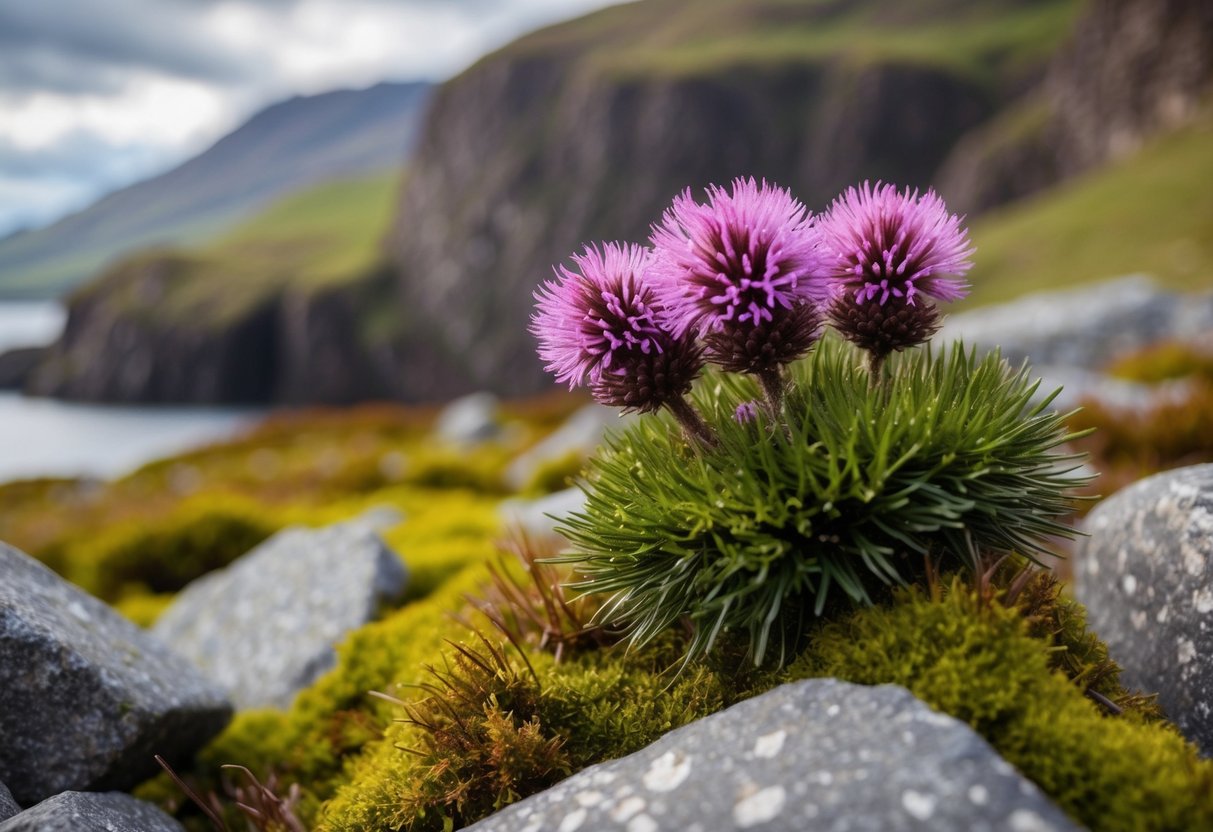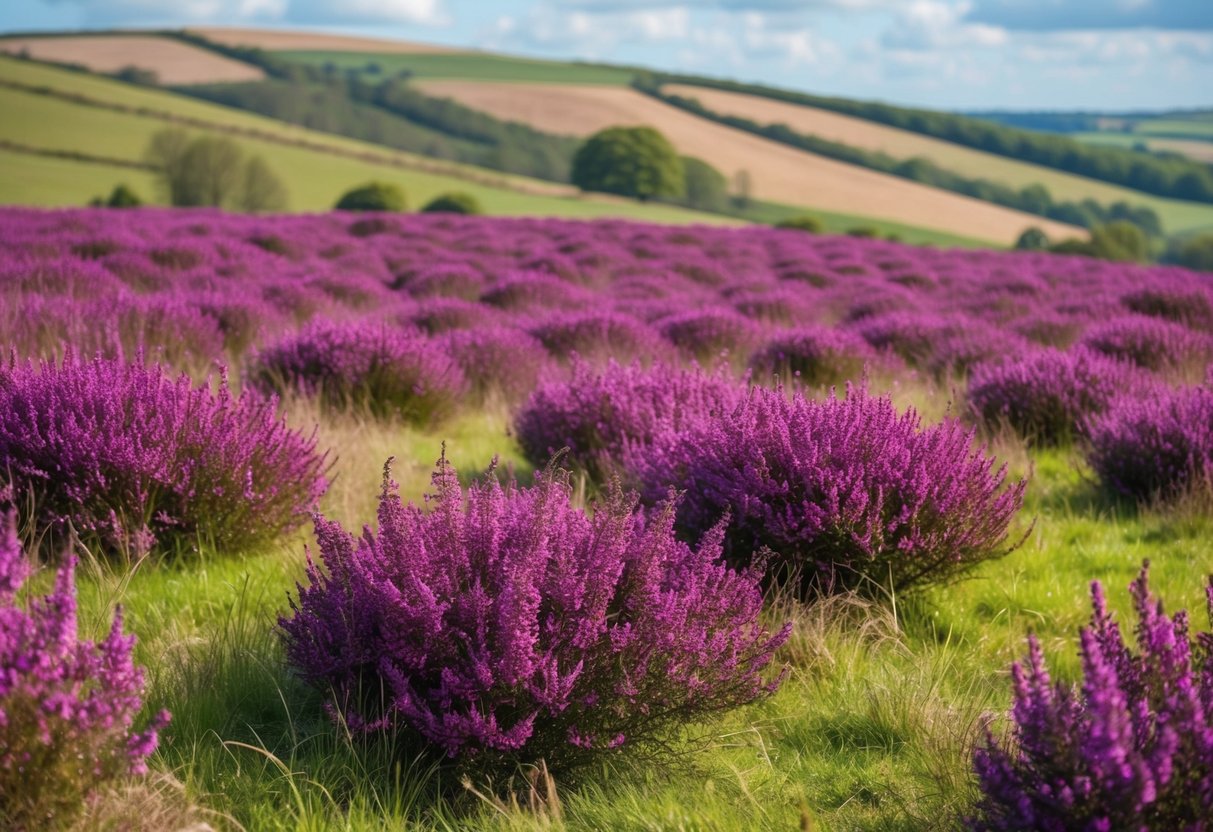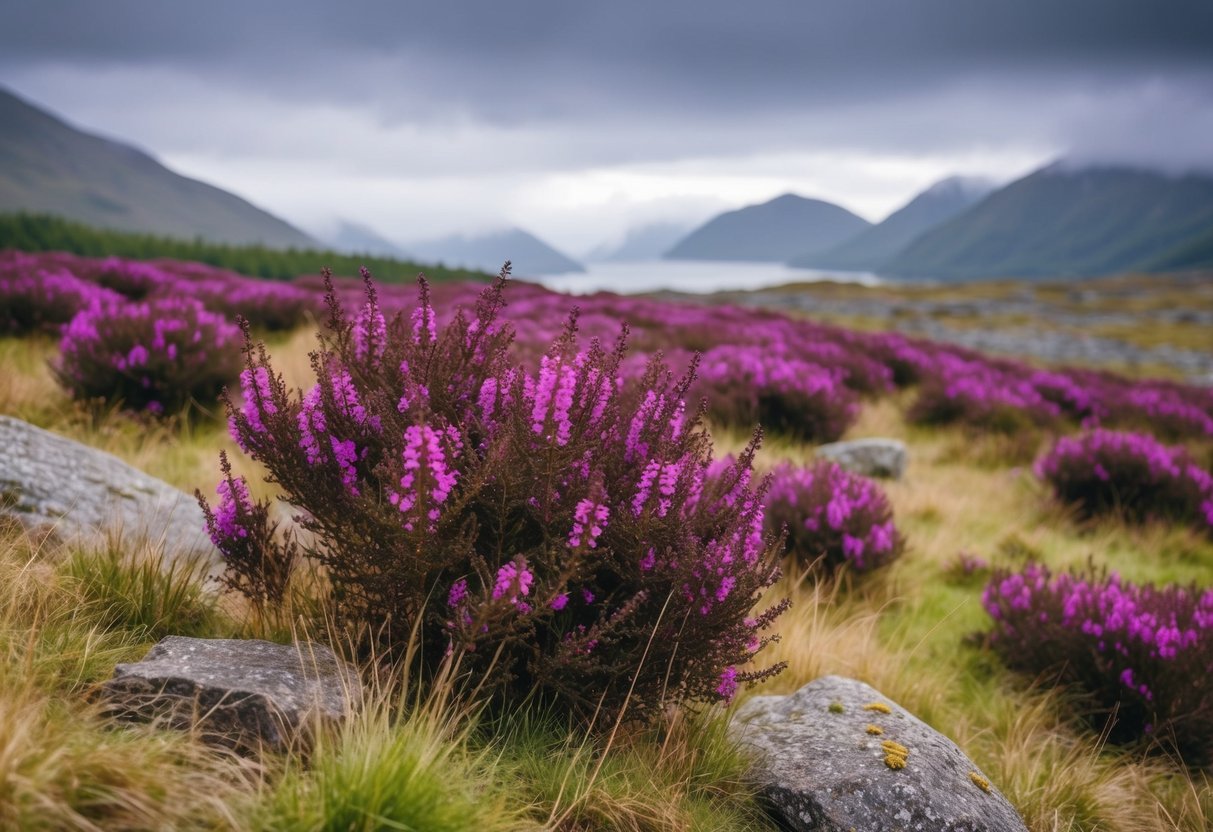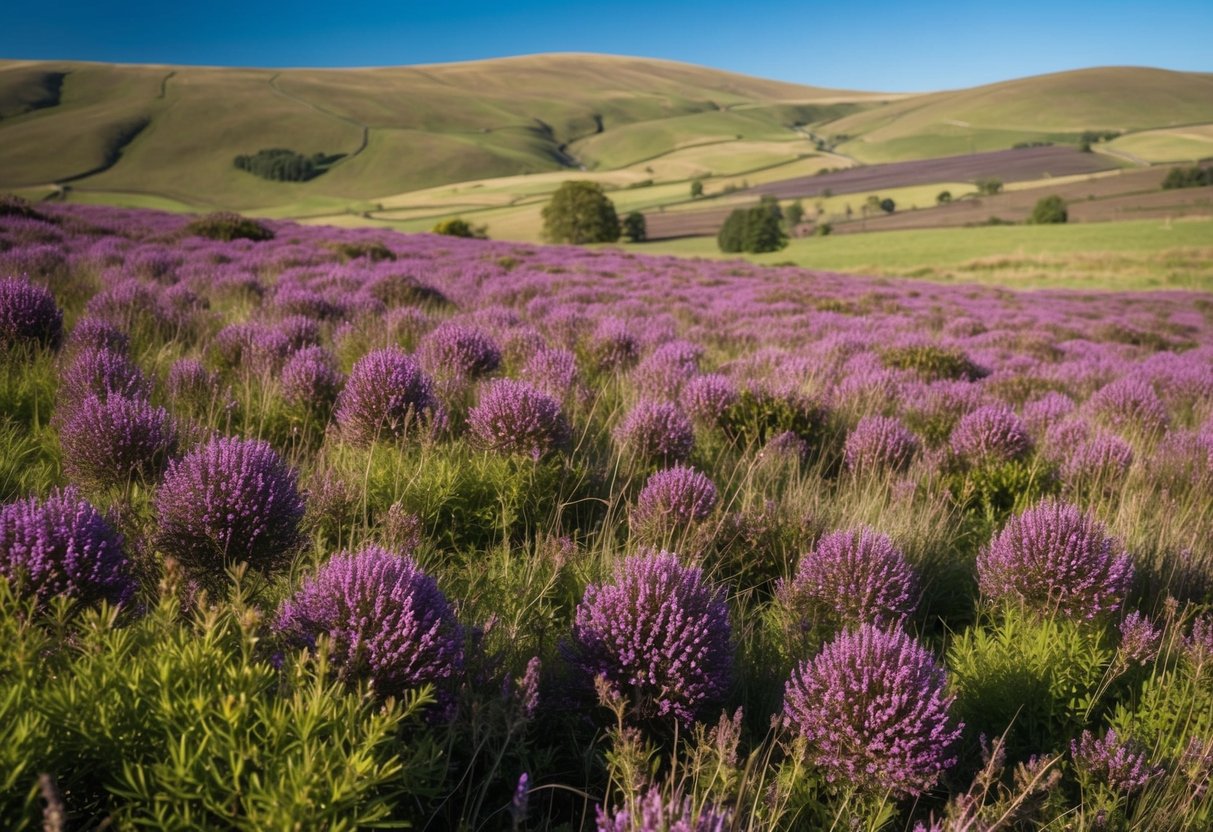What is the Rare Purple Flower in the UK? Discover Its Beauty and Significance
If you love exploring nature, you might be curious about the rare purple flowers that call the UK home. One of the most fascinating is the Purple Gromwell, a nationally rare plant found in select woodland areas. Its vibrant hue stands out, making it a unique sight in the countryside.

Another captivating bloom is the Pasqueflower, though it’s incredibly rare and only seen in a few chalk and limestone grasslands. Both flowers contribute to the UK’s rich biodiversity and offer a glimpse into the delicate balance of nature.
By understanding these rare gems, you can appreciate the efforts needed to protect such beautiful yet elusive plants. Discovering them in their natural habitats offers a rewarding experience for nature enthusiasts and highlights the importance of preserving our environment.
The Rarity and Significance of Purple Flowers in UK

Purple flowers in the UK are not just beautiful to look at; they are also important indicators of biodiversity. Many of these blooms are rare and help highlight the natural richness and delicate balance of ecosystems.
Conservation of Rare Plants in the UK
Preserving rare flowers like the Pasqueflower is essential. These plants are often found in specific habitats such as chalk grasslands or ancient woodlands, places where conservation efforts focus on maintaining their natural state. You can support these efforts by visiting nature reserves and respecting the rules to minimize disturbance to these habitats.
Nature reserves play a crucial role in protecting these species. They provide a safe environment where rare plants can thrive. By supporting local conservation initiatives, you help ensure that these rare purple blooms continue to be a part of the UK’s landscape for future generations.
Purple Flowers as an Indicator of Biodiversity
Purple flowers like the Pasqueflower are more than just pretty; they are vital indicators of biodiversity. When you spot these blooms in the wild, it’s a sign that the ecosystem is healthy. These rare plants often coexist with various other species, making them integral to the habitat’s dynamic balance.
The presence of these flowers often signifies well-preserved landscapes. Observing them can offer you insights into the health of a particular area. So, next time you explore a nature reserve or an ancient woodland, keep an eye out for these alluring blossoms. They tell a story of the rich biodiversity that characterizes the UK’s natural heritage.
Native Purple Flowers of the UK

Purple flowers in the UK include beautiful but rare species that thrive in specific habitats such as grasslands and ancient woodlands. These unique plants reveal much about the area’s rich natural history and the challenges they face due to habitat destruction.
Evolution of Purple Flowers in the British Isles
Purple flowers in the UK have evolved over time to adapt to various environments. Many of these plants are native to chalk grasslands, where they have developed specific traits to survive. For example, the Pasqueflower, with its striking purple petals, thrives on chalk and limestone terrains.
Ancient woodlands also host several native purple flowers like the Columbine, which has adapted to the light filtering through dense tree canopies. These plants have formed over centuries, with unique features to withstand specific conditions. Their presence helps maintain biodiversity in their ecosystems, supporting wildlife such as pollinators.
The Implications of Habitat Destruction
Habitat destruction poses a serious threat to the survival of native purple flowers. Expanding agriculture, urban development, and pollution reduce the natural environments these plants rely on. For example, grasslands that provide necessary conditions for the Early Gentian are becoming increasingly rare.
This loss of habitat not only affects the plants but also impacts the entire ecosystem. Biodiversity diminishes as animals that depend on these flowers for food and shelter also suffer. Protecting these areas is essential to preserve these unique plants for future generations, ensuring that ancient woodlands and grasslands continue to thrive.
Unique Habitats for Purple Flowers in the UK

Purple flowers thrive in unique habitats in the UK, such as chalk grasslands and ancient woodlands. These environments provide the specific conditions needed for these rare and beautiful plants to grow.
Chalk Grasslands and Limestone Habitats
Chalk grasslands and limestone habitats are special areas where purple flowers like the Pasqueflower can be spotted. These areas are often found in southern England and are rich in biodiversity due to their well-drained soil and low nutrients.
These features allow certain wildflowers to flourish while keeping more aggressive plants at bay. The dry soil in these habitats provides a perfect growing condition for the Pasqueflower, which is treasured for its striking violet-purple blooms.
You might encounter these delicate flowers on open hillsides and slopes, adding splashes of color to the landscape. The grazing by animals in these areas also helps maintain the balance, preventing shrubs and trees from taking over.
Ancient Woodlands and Woodland Edges
Ancient woodlands and their edges offer another haven for purple flowers. These woodlands are areas that have existed for centuries, often with a rich tapestry of plant life. They provide a special microclimate where various woodland plants, including purple-flowered species, thrive.
The shaded and moist environment is ideal for purple flowers like the Ghost Orchid. This rare flower lacks chlorophyll and relies on fungi in the soil for nutrients.
Woodland edges, where more sunlight filters through, are also important. These edges allow different species to coexist, where some plants are more adapted to the light conditions found there. You can see a variety of smaller wildflowers along these edges, showing a spectacular blend of purple hues among the greenery.
Notable Rare Purple Flowers of Great Britain

In Great Britain, the purple ghost orchid and the vibrant pasqueflower are fascinating examples of rare flowering plants. These flowers not only captivate with their beauty but also have intriguing histories and ecological roles.
The Mysterious Ghost Orchid
The ghost orchid is one of the United Kingdom’s rarest and most elusive flowers. It has an unusual way of surviving, as it doesn’t rely on sunlight for its energy. Instead, it partners with a special kind of fungi to gather nutrients. You might be intrigued to know that the ghost orchid lacks leaves and chlorophyll, which are common in most plants.
This orchid is typically found in deep woodland areas in parts of the Chilterns and East Anglia. It is hard to spot with its pale, almost spectral blooms. Its rarity makes it a species of interest for both botanists and nature enthusiasts alike. Protecting its habitat is crucial, as the ghost orchid is an indicator of old and healthy woodlands.
Enigmatic Pasqueflower and Its Traditional Ties
The pasqueflower, or Pulsatilla vulgaris, is a delight for those lucky enough to see it. With beautiful purple petals and a central yellow bloom, it is mainly found in specific chalk grasslands in the UK. These include areas in Hertfordshire, where it is the county flower, as well as parts of the Chilterns.
Traditionally associated with Easter, its name is thought to be derived from “Pasque,” which means Easter in French. The pasqueflower flourishes in spring, adding a splash of color to the countryside. Its presence is a sign of biodiversity and well-maintained grasslands. Because of its rarity, efforts are made to collect its seeds for conservation, such as by organizations like Kew’s Millennium Seed Bank.
Preservation Efforts and Public Engagement

Efforts to protect rare purple flowers in the UK involve community participation and educational programs. By engaging with local residents and visitors, these initiatives aim to conserve unique plant species and enhance biodiversity.
Community Involvement in Plant Conservation
Your participation plays a crucial role in saving rare plants, like the purple Pasqueflower. Communities can join conservation groups or volunteer at nature reserves. These activities often involve planting native species or monitoring plant health.
You can also contribute by reporting sightings of rare species to local wildlife trusts. This helps keep track of plant populations and informs conservation strategies. Community events, such as guided walks, let you learn about these rare plants and their habitats.
Through such involvement, you become a part of efforts to protect biodiversity and combat climate change in England. Supporting local businesses that prioritize eco-friendly practices further enhances these preservation activities.
Educational Outreach and the Role of Nature Reserves
Nature reserves serve as critical educational tools in preserving rare species. When you visit, you can participate in programs that teach about plant conservation. These reserves organize workshops, school visits, and online resources to raise awareness.
Educational materials often include information on the importance of biodiversity and how climate change affects plant life. For a deeper understanding, interactive exhibits or nature trails might be available.
By participating, you gain insights into the role these flowers play in their ecosystems. Learning about the delicate balance of nature encourages support for conservation efforts, ensuring these rare flowers remain a part of the UK’s landscape.







